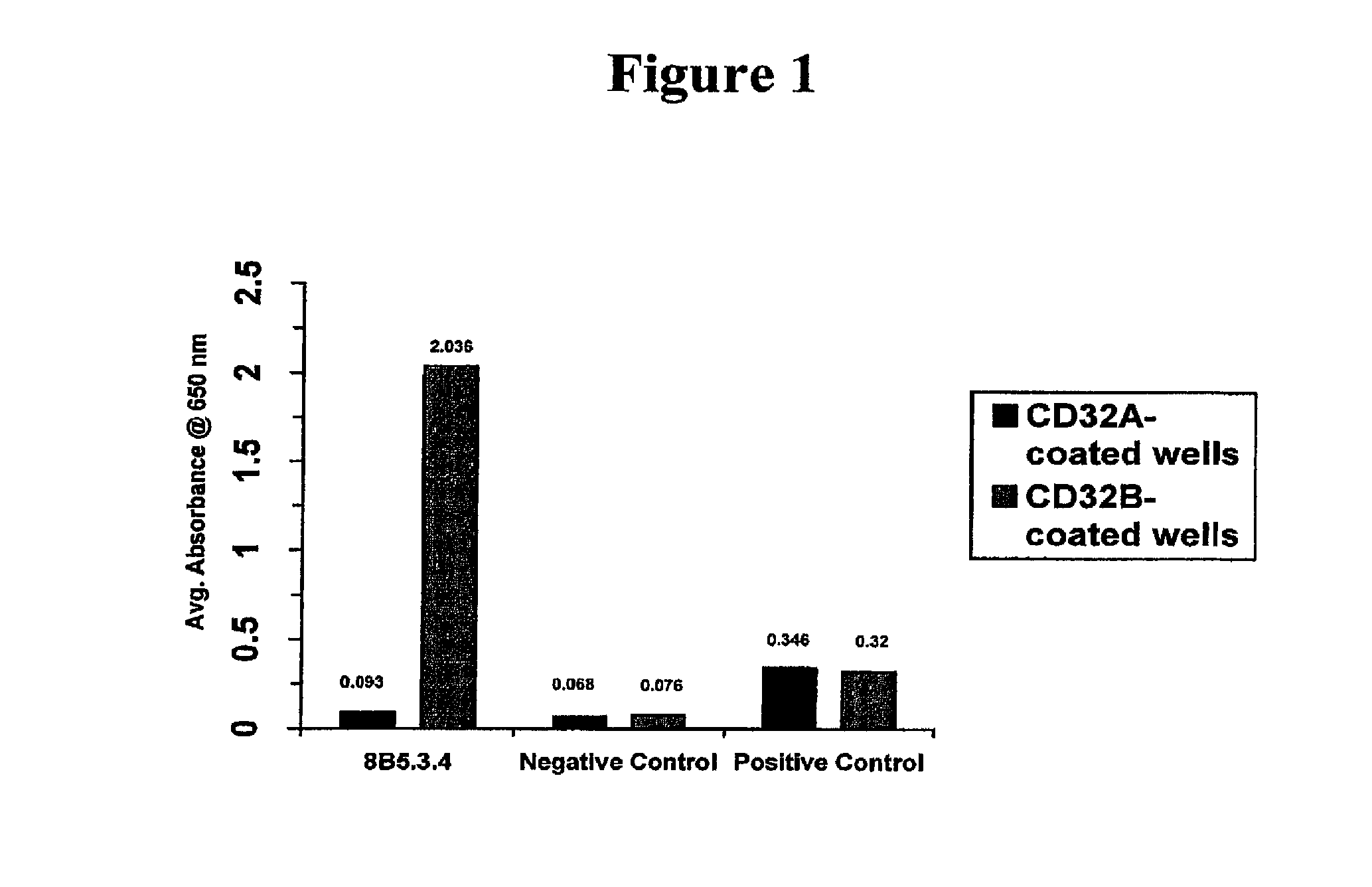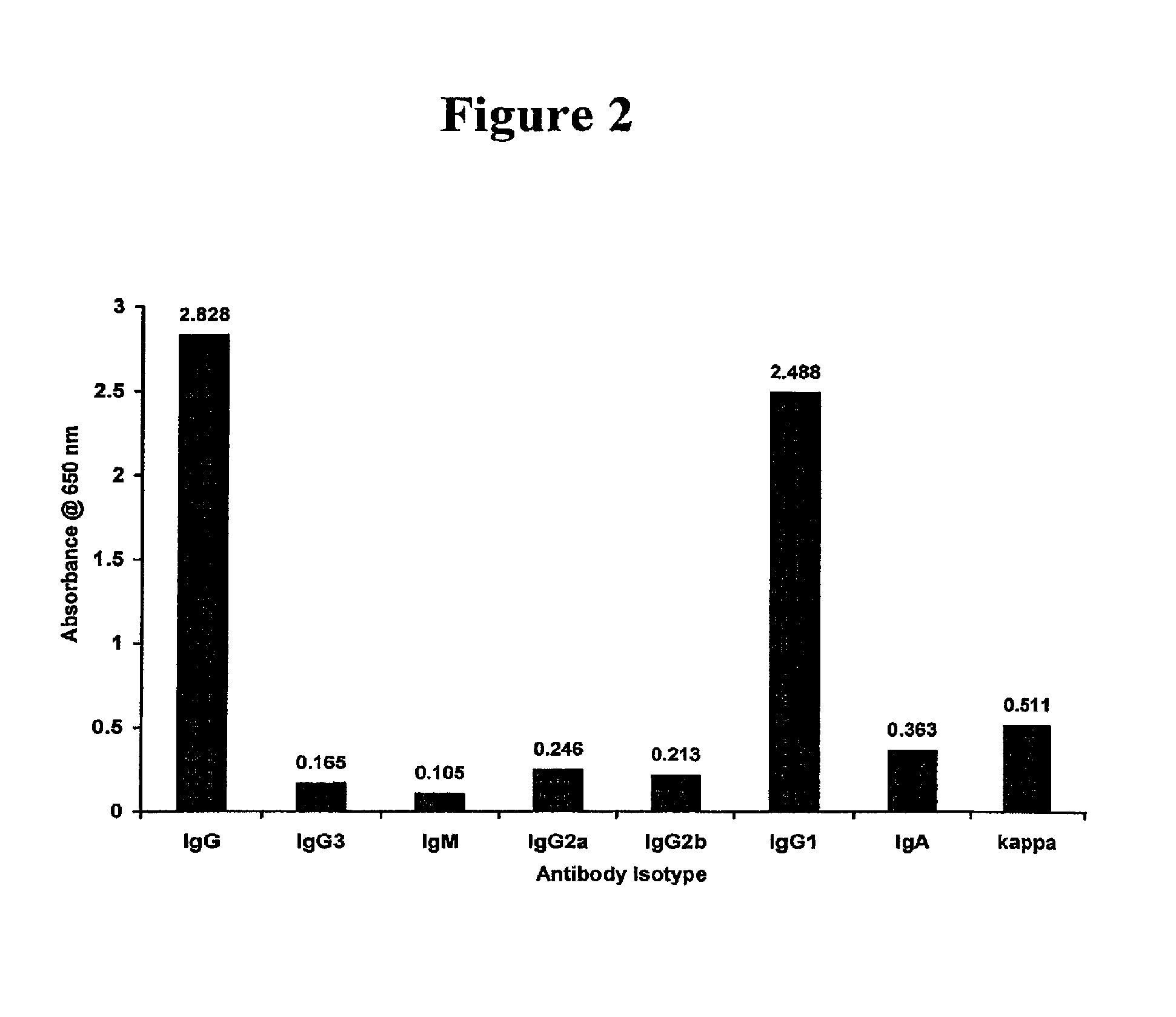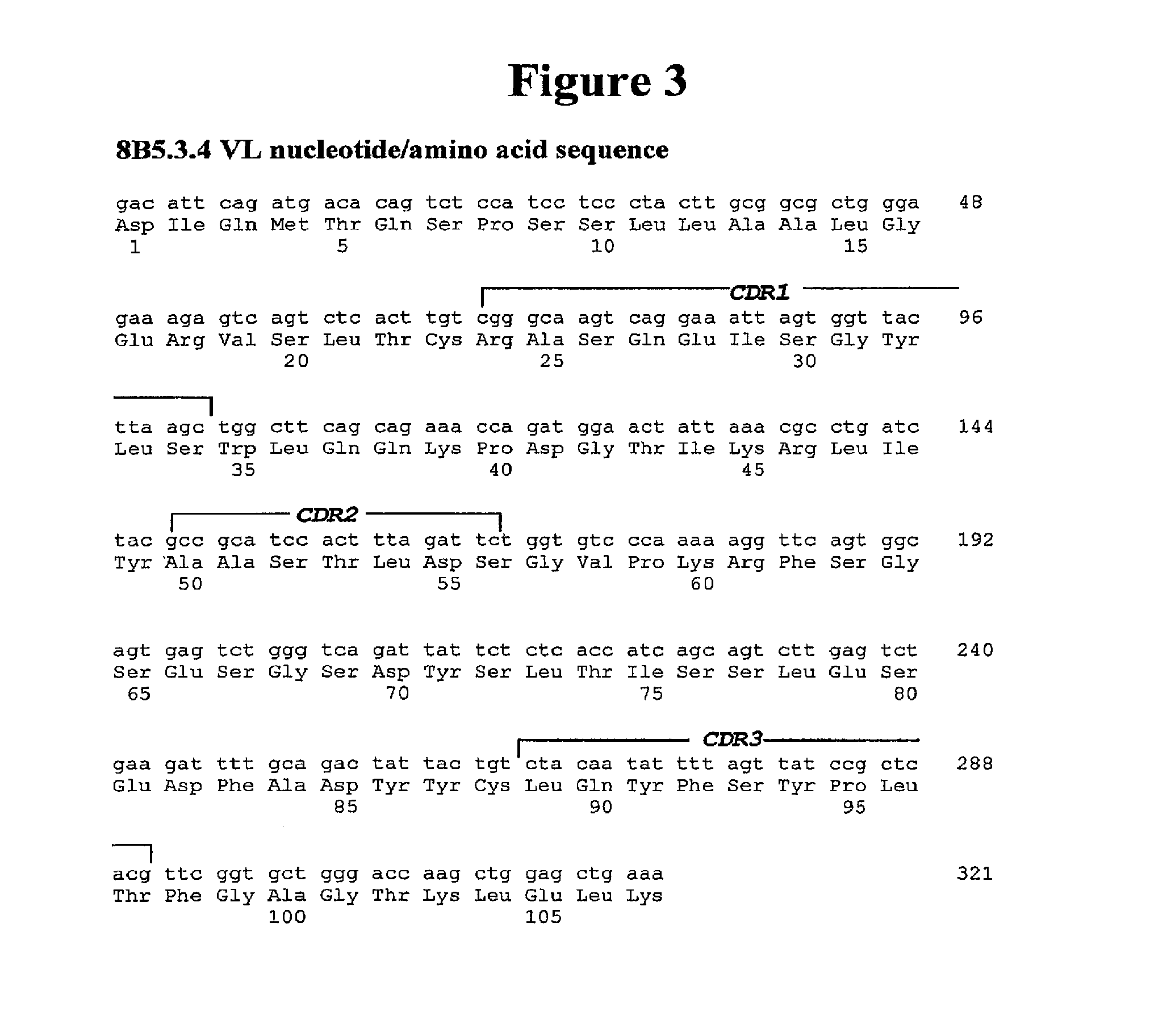Fc.gamma.RIIB--specific antibodies and methods of use thereof
a technology of fc.gamma.riib and specific antibodies, which is applied in the field of fc.gamma.riib-specific antibodies and methods of use thereof, can solve the problems of increasing destruction, affecting the effect of cellular responsiveness, so as to enhance the effector function and enhance the therapeutic effect of current methods
- Summary
- Abstract
- Description
- Claims
- Application Information
AI Technical Summary
Benefits of technology
Problems solved by technology
Method used
Image
Examples
Embodiment Construction
[0126]5.1 FcγRIIB-Specific Antibodies
[0127]The present invention encompasses antibodies (preferably monoclonal antibodies) or fragments thereof that specifically bind FcγRIIB, preferably human FcγRIIB, more preferably native human FcγRIIB with a greater affinity than said antibodies or fragments thereof bind FcγRIIA, preferably human FcγRIIA, more preferably native human FcγRIIA. Representative antibodies are disclosed in U.S. Patent Application Publication No. 2004 / 0185045, U.S. Provisional Application Ser. No. 60 / 569,882, and U.S. patent application Ser. No. 11 / 126,978, herein expressly incorporated by reference in their entireties. The present invention encompasses the use of a FcγRIIB-specific antibody, an analog, derivative or an antigen-binding fragment thereof (e.g., one or more complementarity determining regions (“CDRs”) of a FcγRIIB-specific antibody) in the prevention, treatment, management or amelioration of a disease, such as cancer, in particular, a B-cell malignancy, ...
PUM
| Property | Measurement | Unit |
|---|---|---|
| affinity | aaaaa | aaaaa |
Abstract
Description
Claims
Application Information
 Login to View More
Login to View More - R&D
- Intellectual Property
- Life Sciences
- Materials
- Tech Scout
- Unparalleled Data Quality
- Higher Quality Content
- 60% Fewer Hallucinations
Browse by: Latest US Patents, China's latest patents, Technical Efficacy Thesaurus, Application Domain, Technology Topic, Popular Technical Reports.
© 2025 PatSnap. All rights reserved.Legal|Privacy policy|Modern Slavery Act Transparency Statement|Sitemap|About US| Contact US: help@patsnap.com



